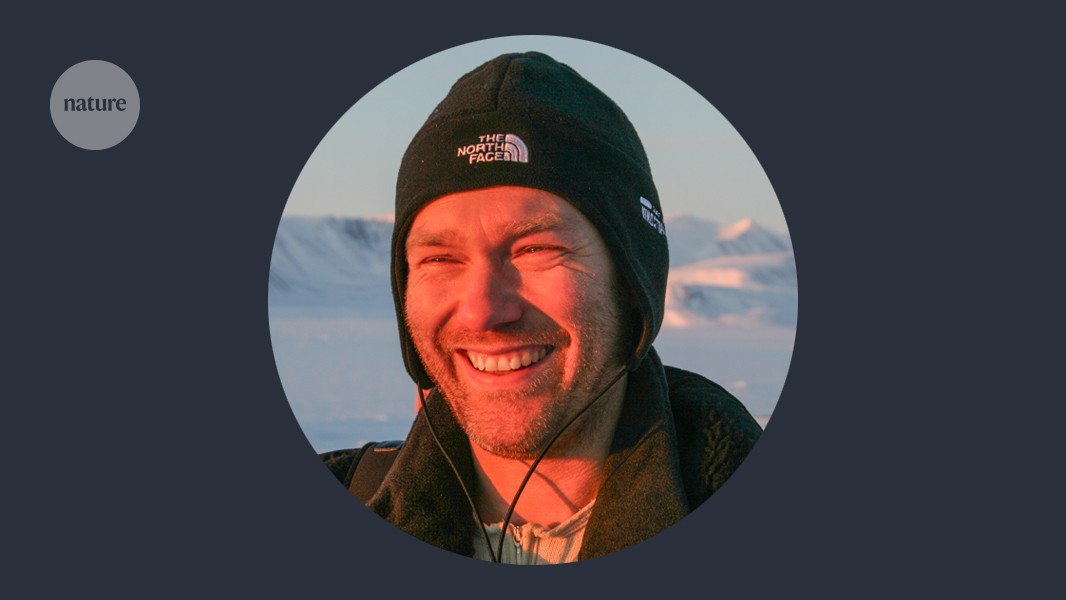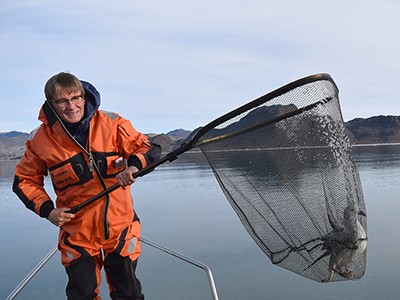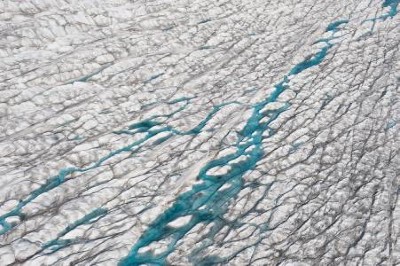The Arctic is under stress, that much is known. Between 1979 and 2021, the region warmed four times faster than the global average, with effects — as yet poorly understood — on its ecology and ability to store carbon, on global sea levels and on wider ocean-circulation and weather patterns.
Add in the effects of biodiversity loss and pollution, and people often refer to a triple planetary crisis. I think we should actually be talking about a quadruple crisis. Since starting research in the Arctic in 1997, I have spent nearly all of my summers there, monitoring changes in pollution levels, habitats and food webs using a ‘One Health’ approach that integrates effects on wildlife, humans and ecosystems. And it’s becoming clear that, as the Arctic warms, its environment degrades and human activities increase, new health threats are emerging. In particular, the Arctic is likely to become a hotbed for zoonotic diseases that spill over into humans from other animals. That threat was brought home to all of us by the COVID-19 pandemic. We need to take seriously the possibility that the next pandemic could come from the north.
Hello puffins, goodbye belugas: changing Arctic fjord hints at our climate future
Some 60% of emerging infectious diseases are zoonotic. Their emergence and spillover is in general highly interlinked with habitat degradation, biodiversity loss and food-web changes — all of which are present in the Arctic. But a warming Arctic harbours other risks. As sea ice thaws, ‘forever chemicals’ are increasingly being transported into Arctic environments. These include mercury, per- and polyfluoroalkyl substances and polychlorinated biphenyls, all known to modulate human and animal immune systems and increase vulnerability to respiratory infections. Invasive fish and whale species are also bringing in industrial chemicals and their own diseases.
The pathogens enter an environment in which some native species, such as polar bears (Ursus maritimus), have not been exposed to them, and so are at increased risk. The release of ancient microorganisms long frozen in ice and sediments as the landscape thaws adds to this danger: humans and other wildlife are likely to lack any immune defences against them.
These risk factors are set to increase. The first ice-free Arctic summers could come as early as the 2030s. The Arctic Ocean has huge potential for energy, fishery and tourism sectors, and is not subject to any global treaty regulating its exploitation. Further wildlife disturbance, pollution, overfishing and jurisdictional conflicts are the likely result.
Epic blazes threaten Arctic permafrost. Can firefighters save it?
The current perception is that the Arctic possesses relatively low microbial activity. Compared with temperate and tropical latitudes, many fewer resources are devoted to studying zoonoses in the Arctic, with sparse surveillance for emerging threats in most areas. This needs to change — taking account of human, animal and wider environmental perspectives.
When it comes to logistics, low-tech is high-tech in the Arctic. On the human side, Canadian researchers have already started taking samples from sewage and other sources that can easily be analysed for the presence of viral pathogens. This kind of approach should be combined with better access to community health care, clinical inspections and consultations with local doctors. A particular flash point is the handling and consumption of raw or dried animal meat in subsistence-hunting communities. Hygiene courses, meat inspection and better disease surveillance developed in partnership with those communities can help to both sustain food security and prevent spillover events.
On the wildlife side, long-term finance is needed for yearly and seasonal surveillance programmes. These schemes should collaborate with local communities using existing techniques that don’t rely on technologies such as cryogenics and so are easy to use in situ. Such activities could be embedded into the ongoing Arctic Council monitoring and assessment programmes on pollution, biodiversity and climate change, as laid out in the council’s ‘One Arctic, One Health’ project.
Greenland’s massive ice sheet is melting — here’s how to save it
On the broader environmental front, efforts to reduce pollution, safeguard biodiversity and reduce greenhouse-gas emissions through international agreements play their part. Efforts spearheaded by various Arctic Council working groups, and other initiatives such as the ongoing negotiations for a United Nations-backed treaty on plastic pollution, show how intergovernmental and interdisciplinary collaboration across public health, biodiversity conservation, pollution and food security can help with achieving sustainability.
To make a true difference, there is need for a broader Arctic monitoring and assessment plan, underpinned by treaty, that combines surveillance of pollution and of disease. This is currently difficult to achieve through the Arctic Council, given the absence of Russia and Russian data since the country’s invasion of Ukraine in 2022. A better opportunity to establish a holistic understanding and action plan might be afforded by the proposed pandemic-preparedness treaty, currently under negotiation at the World Health Organization. This could build on the efforts of almost 200 globally recognized One Health Networks, including those in the Arctic.
Action must be taken now. If it isn’t, it will become more difficult to mitigate wildlife interactions and diagnose, treat and isolate people with an infection — and the risk of a future pandemic with an Arctic ground zero will only increase.
Competing Interests
The author declares no competing interests.





